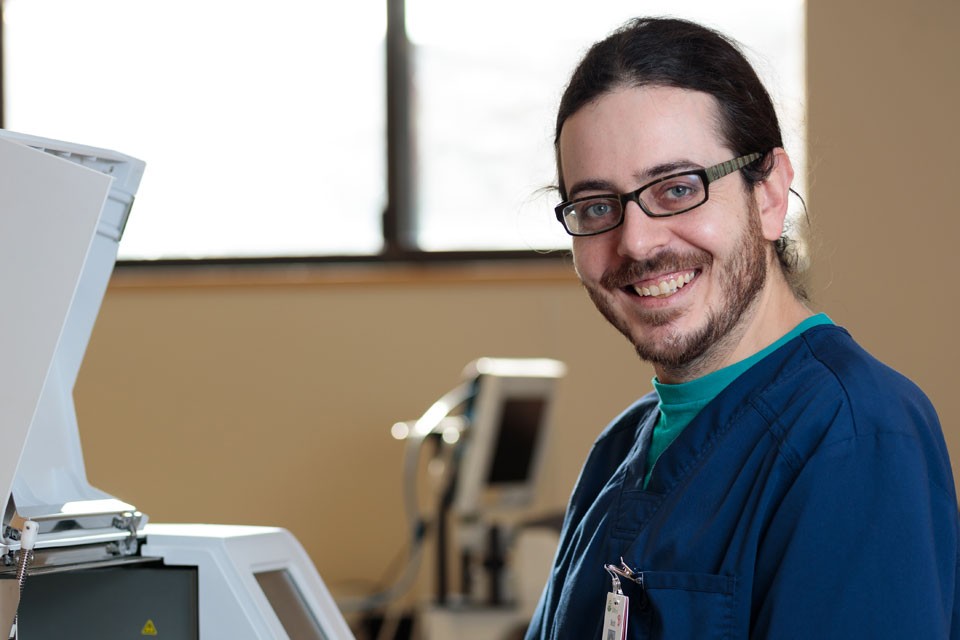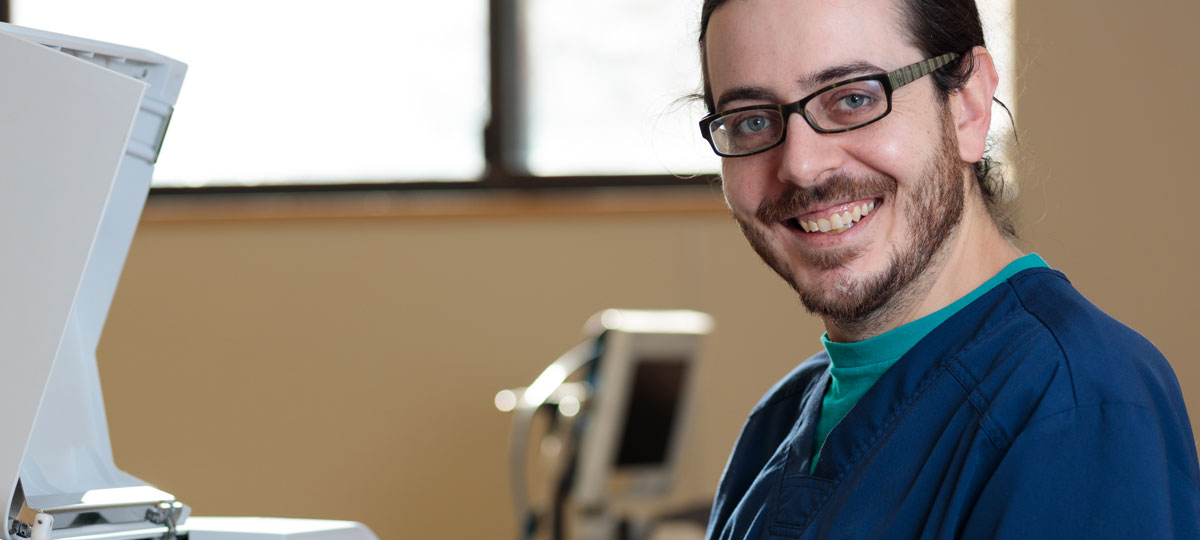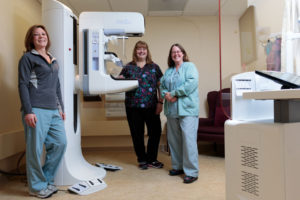

“Gold standard” technology and tests support patient care
At the end of a quiet hallway on the ground floor of the hospital is Gifford’s laboratory, a 24-hour hub of activity that touches all aspects of patient care. Here 22 specially trained technicians, technologists, and lab assistants perform the critical clinical testing and analysis that providers need to accurately diagnose and treat patients.
Another important but less talked about function of the lab is to keep up on the most current technology and testing available and develop ways to make these readily available to our providers and patients.
“We’re constantly trying to get higher-quality results faster,” says Lab Manager Matthew Clayton. “The ‘gold standard’ for specific tests is constantly changing and we keep up with this. It’s our job to make sure that the newest technology, drugs, and testing procedures have an efficient process in our system and to let providers know they are available.”
When a new test measuring vitamin D levels in the blood came out last spring, Gifford was one of the first labs in the area to add it to our in-house testing panel, avoiding the delay involved in using an outside lab. And staff regularly monitor the turn-around times of the outside labs we do use, to make sure patients are getting the fastest service possible.
Sometimes the team works to make it easier for providers to integrate lab services into patient care. This year lab specialists worked with Dr. Chris Lukonis and the Addiction Medicine team to develop a point-of-care process system that brings urine drug-testing to patients as part of a scheduled appointment. The Medication Assisted Treatment (MAT) program regularly tests patients for compliance, and this new process eliminates a lab visit and potential delay while waiting for results.
In 2017 154,591 lab procedures were performed in the lab, many of them highly complex tests that are not usually found in a small hospital. Gifford invests in new testing equipment and recently enhanced its ability to do molecular testing, which Clayton calls the “cutting-edge of lab science.”
New BioFire FilmArray technology now tests stool samples for common pathogens like salmonella or E coli in an hour, but it can also detect 22 other pathogens as well—a significant benefit in a lab that performs an average of 5 to 15 stool tests a week. Clayton says that soon there will be molecular tests available for other diagnosis like sexually transmitted infections, or even the flu.
“A lot of small labs haven’t invested in this technology because it’s expensive,” he said. “But this really is the future of diagnosing and monitoring disease and the investment is worth it—we often can get very high quality reports to providers in one day.”
Improving the technology and experience of breast care screenings

Left to right: Radiology technologist Brittany Kelton, lead mammographer Kim Nelson, and radiology technologist Mona Parker in the new 3D mammography room.
In the spring of 2017 Gifford added 3D breast mammography to Breast Care Services, and created a new suite to include breast ultrasound and mammography in one convenient location. The new suite was designed to create a more relaxed experience for women who may feel anxious or stressed. Soft lighting and music as well as a comfortable chair create a professional but warm environment for the mammogram.The cutting-edge 3D screening technology provides clearer and more accurate images for both standard (2D) and 3D mammogram exams, reducing the need to come back for additional testing.
“The increased accuracy of this new 3D technology is in itself reassuring for patients—it lets us see breast tissue in greater detail so we can detect smaller cancer earlier, when it is easier to treat,” said Lead Mammographer Kim Nelson. “Dense breast tissue may look similar to cancer tissue on 2D mammograms but 3D mammograms reduce this appearance. This reduces anxiety for women with dense breasts, who often receive ‘false positive’ recalls.”

